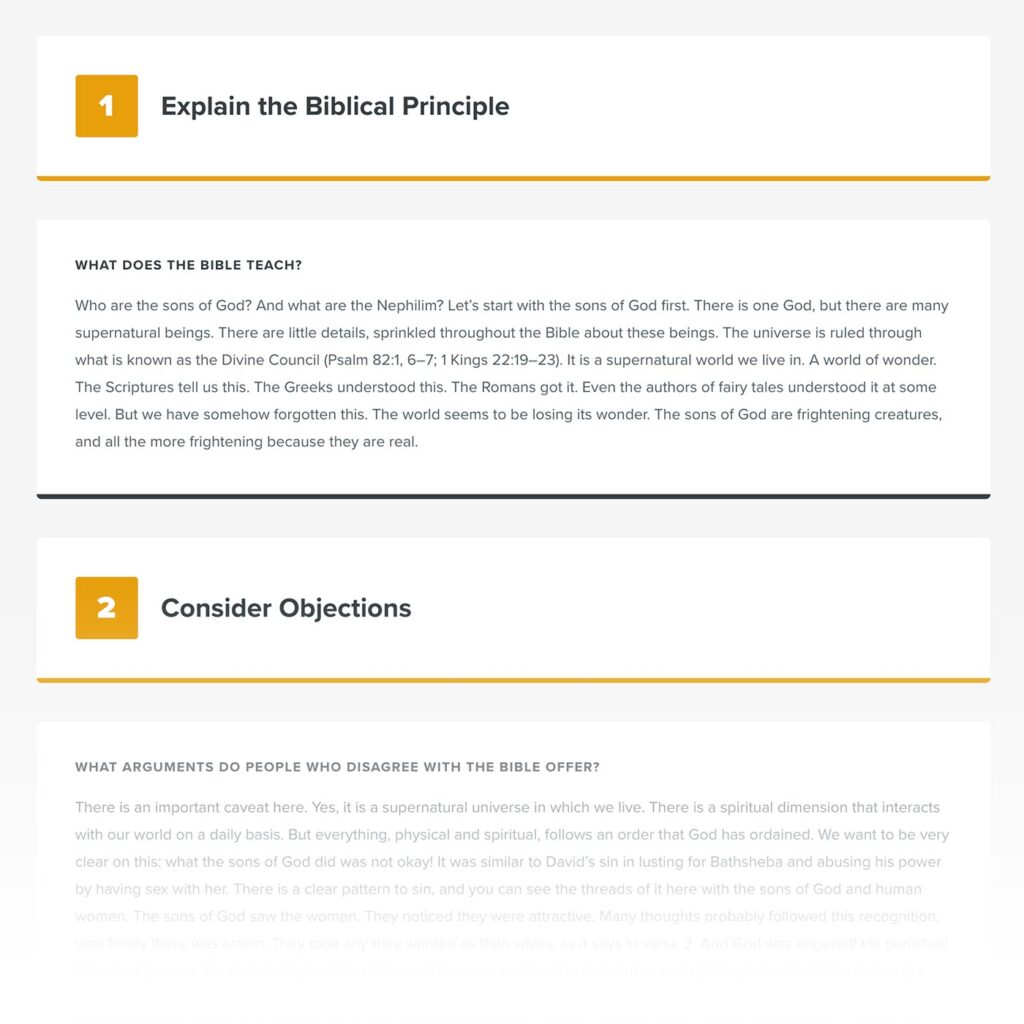The Defender's Outline
Work through this template when using apologetics to teach or defend a tenet of the Christian faith.
There’s a lot of happy themes in the Bible: peace, hope, joy, and love, just to name a few! However, eventually, every pastor is compelled to teach about topics that other people might not agree with, like the inerrancy of the Bible or the church’s stance on specific moral issues.
When the time comes to preach apologetics from the pulpit, you’ll want to make sure that your teaching is presented in a way that your congregation can understand and re-state when having discussions with unbelievers or fighting their own doubts.
This outline, which is one of the pre-built outlines provided Sermonary, will walk you through the steps of crafting a tenable but uplifting message to share with your church.
- Introduction. Start, as always, with something that will capture your audience’s attention. This is a little bit easier when you’re preaching on controversial subjects—all you have to do is introduce your topic! You can follow that by explaining the importance of your subject, why a discussion is needed, or by acknowledging that some people have doubts or differing opinions on the subject.
- Explain the Biblical principle. If you didn’t read your sermon’s text in the introduction, now is the time to bring out your Bible. If you did, refer back to key verses or phrases as you explain the position you’ll spend the rest of your sermon defending
- Consider objections. In academic terms, this is known as “addressing the counterargument,” and you might remember it from college. Unsurprisingly, it’s a crucial piece of the sermon, and should not be glossed over. Do your research and make sure that you fully understand the opposing side—after all, there could be people in your congregation who struggle with these same doubts or who are trying to witness to someone who throws these very arguments at them. This not only helps you to provide a thoughtful and complete rebuttal, but it sets you up to demonstrate that you’re someone who has examined all the arguments and come to the rational conclusion that the Bible offers the right answer.
- Offer a defense. This is where you refute the arguments against the Biblical principle that you’ve introduced. This, too, may require some research, because you’ll be offering reasons beyond, “You just have to accept it on faith!” As you’re crafting your closing arguments, be encouraged by the fact that your hard work will help ensure that the people at your church understand their faith is based in reality! Plus, you’re giving them the tools to witness to their unbelieving family and friends.
- Provide application. Now, encourage your congregation by explaining how this head knowledge can change our lives! It’s the part of the sermon that reinforces how believing the right things about God affects our entire life, and it gives your congregation something that they can directly apply to themselves, even if they don’t struggle to believe the position you defended. It enables you to end a potentially dense or emotionally heavy sermon on a high note, and it encourages spiritual growth.
Want to have software that will help you systematically work through the process of creating an outline for your Defenders outline? Sign up for a free trial of Sermonary today!

See how the Defender's Outline works

Don't let sermon writing hang over your head all week
We believe writing and preparing sermons should be one of the highlights of pastoral ministry rather than one of the greatest burdens. That’s why we’ve created a sermon editor used by thousands of pastors to streamline their sermon writing process, inspire ideas to help them find momentum, and help keep the joy of ministry and sermon prep.